University of Pittsburgh School of Law
The University of Pittsburgh School of Law (Pitt Law) was founded in 1895. It became a charter member of the Association of American Law Schools in 1900. Its primary home facility is the Barco Law Building. The school offers four degrees: Master of Studies in Law, Juris Doctor, Master of Laws for international students, and the Doctor of Juridical Science. The school offers several international legal programs, operates a variety of clinics, and publishes several law journals.
| University of Pittsburgh School of Law | |
|---|---|
| Parent school | University of Pittsburgh |
| Established | 1895 |
| School type | Public |
| Dean | Amy J. Wildermuth |
| Location | Pittsburgh, Pennsylvania, United States |
| Enrollment | 400 |
| Faculty | 86 full-time faculty |
| USNWR ranking | 76[1] |
| Website | law.pitt.edu |
According to University of Pittsburgh School of Law's 2016 ABA-required disclosures, 91.4% of graduates were employed ten months after graduation with 68% attaining positions where bar admission is required.[2]
History
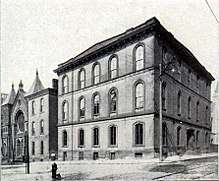
The law department was founded in 1843 and is one of 17 schools constituting the University of Pittsburgh.[3][4] The first four law degrees were conferred in 1847.[5] Classes were held in a stone building at Third Street until the building was destroyed in the fire of 1845 and were then held in the university's building on Duquesne Way until that building was burned in 1849. Classes were continued after the second fire in the basement of the Third Presbyterian Church until the universities first law professor, Walter H. Lowrie, was elected to the Supreme Court of Pennsylvania in 1851 and forced him to abandon his teaching at the school.[5] This, along with the fires that destroyed many of the university's facilities and resources, disrupted the development of the School of Law.
Although various attempts were made to reestablish law instruction beginning in 1862, a permanent law school was not established until 1895. The university at that time was named the Western University of Pennsylvania, but despite this, the law school was originally named the Pittsburgh Law School, a name it held until 1918.[6] The Pittsburgh Law School became a charter member of the Association of American Law Schools in 1900.
The first classes in the permanently established school were conducted in the orphans' court rooms in the old Allegheny County courthouse. In 1897, the school moved into the old university building at Ross and Diamond streets that had been sold to the county in 1882. The school moved again in 1919-20 to the tenth floor of the Chamber of Commerce building.[7] In 1936 the School of Law moved in its entirety to the 14-16 floors of the Cathedral of Learning on the main campus of the university located in the Oakland neighborhood of Pittsburgh.[8] The School of Law moved into their own dedicated facility, the Barco Law Building, upon its opening on the university's main campus in 1976.[9]
Today, Pitt's Law School faculty has been ranked 21st in the nation based on a standard objective measure of scholarly impact. Pitt Law is currently ranked 76th out of 184 in U.S. News & World Report's rankings of America's top law schools[10] and is listed among the "Best Law Schools" by The Princeton Review.[11] Pitt Law is also one of 80 law schools with membership in the Order of the Coif.
Facilities
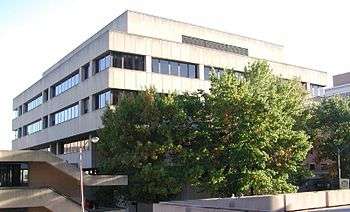
- Barco Law Building - Pitt Law School is housed in the six-story Barco Law Building on Forbes Avenue, located on the main campus of the University of Pittsburgh.
- Barco Law Library - The Law Library is housed on the third, fourth, and fifth floors of the Barco Law Building. The library was renovated in 2004 , and the current collection numbers some 450,000 volumes and volume equivalents and has a seating capacity, in both the individual carrels and in private reading areas, of over 400. In addition, located within several blocks of the Law Building are Hillman Library, Carnegie Library of Pittsburgh, and several special libraries of the University, including the business, medical, and public and international affairs libraries.
- Teplitz Memorial Moot Courtroom - Located on the ground floor, the moot courtroom, named for the late Benjamin H. Teplitz, includes a seven-seat judges' bench, jury and press boxes, counselors' tables, judges' chambers, and a jury room. It is used primarily by trial tactics classes and by the growing number of moot court programs. It is equipped to handle special sessions of the Commonwealth and Federal Appellate Courts and hearings before various administrative tribunals.
- Other design features of the Law Building include a pedestrian bridge connecting the School of Law with Litchfield Towers dormitories, Lawrence Hall, and Wesley W. Posvar Hall.
Deans of the Law School
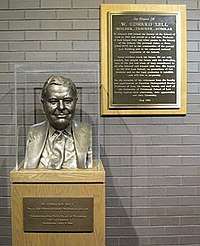
- John Douglass Shafer, 1895–1920
- Alexander Marshall Thompson, 1920–1940
- Eugene Allen Gilmore, 1940–1942
- Judson Adams Crane, 1942–1949
- Charles Bernard Nutting, 1949–1951
- Judson Adams Crane (Acting Dean), 1951–1952
- Brainerd Currie, 1952–1953
- Arthur Larson (on leave of absence 1954-56), 1953–1956
- Charles Wilson Taintor II (Acting Dean), 1954–1957
- Thomas McIntyre Cooley II, 1957–1965
- William Edward Sell, Chairman, Administrative Committee, 1965–1966; Dean, 1966–1977
- John E. Murray, Jr., 1977–1984
- Richard J. Pierce, Jr., 1984–1985
- Mark A. Nordenberg, 1985-1993 (University Chancellor, 1995–2014)
- Richard H. Seeburger (Interim Dean), 1993–1994
- Peter M. Shane, 1994–1998
- David J. Herring, 1998–2005
- Mary A. Crossley, 2005–2012
- William M. Carter Jr., 2012–2018
- Amy J. Wildermuth, 2018–Present
Academics
The University of Pittsburgh School of Law offers four degrees. The J.D. (Juris Doctor) is the required degree to practice law in most of the United States, thus J.D. students make up most of the school's student body.
Academic programs
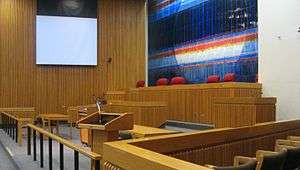
- The John P. Gismondi Civil Litigation Certificate Program
- Environmental Law, Science and Policy
- Health Law
- Intellectual Property and Technology Law
- International and Comparative Law
- Disability Studies
- Law and Entrepreneurship
- Washington, D.C. Externship Program
Pitt Law Center for International Legal Education
Pitt Law offers area studies in the following international legal systems:
- Asian Studies
- Global Studies
- Latin American Studies
- Russia and Eastern European Studies
- Western European Studies
These area studies serve to supplement the study of International Law, in addition to providing Pitt Law students with the opportunity to pursue careers abroad.
Experiential skills programs
Clinics
The University of Pittsburgh School of Law has several clinical programs, which allow law students to gain practical experience as lawyers before graduating from law school. The following clinics are currently offered by the School of Law:
- Tax Clinic
- Securities Arbitration Clinic
- Family Law Clinic
- Environmental Law Clinic
- Health Law Clinic
- Elder Law Clinic
- Immigration Law Clinic
Lawyering Skills Competitions
The law school also hosts and facilitates multiple moot court and lawyering skills competitions for law students. The law school's Moot Court Board administers three intramural competitions each year: the Appellate Moot Court Competition, the Murray S. Love Trial Moot Court Competition, and the Negotiations Competition. The school also assembles teams to compete at multiple interscholastic and international moot court competitions covering specialized areas such as Energy Law, Environmental Law, Health Law, International Arbitration and International Law, Workers' Compensation Law, Client Counseling, and Intellectual Property. The school's Mock Trial Program recruits adjunct coaches from the local practicing bar to assemble law student teams to participate in mock trial competitions throughout the country. In 2014-2015, more than 20% of second- and third-year students participated in an interscholastic competition.[12]
Practicums
The law school has several practicum courses, which aim to combine traditional coursework and instruction with experiential learning under supervising attorneys in various specific interest areas:[13]
- Criminal Prosecution Practicum
- Education Law Practicum
- Health Law Practicum: Alternative Dispute Resolution
- Law, Entertainment, and Social Enterprise Practicum
- Lawyering Process III Practicum
- Pennsylvania Practice Practicum
- Medicare and Medicaid Practicum
- Social Security Disability Practicum
- Unemployment Compensation Practicum
- Veterans Practicum
- Workers' Compensation Practicum
Semester in D.C. Program
The law school's Semester in D.C. Program allows spring semester second- and third-year students to pursue a full-time externship for an employer in Washington, D.C.. The Semester in D.C. combines full-time work for academic credit with a small seminar class held at the law school's dedicated Washington Center to fulfill a full semester credit load. Students can also pursue a Public Policy Concentration, taking additional courses to learn to apply legal advocacy, research, and writing skills in the policy context.
Publications
Journals
Pitt Law is home to two law reviews and several student-edited legal journals, including the Pittsburgh Law Review, which is one of the 40 most-cited law reviews in the country, according to Chicago-Kent Law Review's 1996 Faculty Scholarship Survey . The following law reviews are all publications of the University of Pittsburgh School of Law:
The following journals are all publications of the University of Pittsburgh School of Law:
JURIST
JURIST is the world's only law school-based comprehensive legal news and research service. Its professionally trained staff of law faculty and law students report and research the latest legal developments in real time for members of the legal community and the public at large. JURIST covers legal news stories based on their substantive importance rather than on their mass-market or commercial appeal.
Applicant Information
Admissions
Admissions to the University of Pittsburgh School of Law are conducted on a rolling basis, with an acceptance rate of slightly less than 30%. For the entering class of 2019, the median LSAT score was 158, and the median GPA was 3.49.[14] There were 120 entering students.
Admissions Statistics for the University of Pittsburgh School of Law[15]
| Year | Enrolled | Applications | LSAT - Median | GPA - Median | LSAT - 25th | LSAT - 75th | GPA - 25th | GPA - 75th |
|---|---|---|---|---|---|---|---|---|
| 2019 | 120 | 1,196 | 158 | 3.49 | 155 | 160 | 3.22 | 3.71 |
| 2018 | 130 | 1,832 | 157 | 3.39 | 154 | 159 | 3.09 | 3.60 |
| 2017 | 141 | 1,713 | 156 | 3.42 | 152 | 158 | 3.11 | 3.62 |
| 2016 | 140 | 1,341 | 156 | 3.42 | 152 | 159 | 3.12 | 3.64 |
| 2015 | 134 | 1,401 | 156 | 3.36 | 153 | 159 | 3.03 | 3.63 |
| 2014 | 156 | 1,172 | 157 | 3.46 | 152 | 160 | 3.09 | 3.68 |
| 2013 | 174 | 1,487 | 158 | 3.42 | 154 | 161 | 3.16 | 3.61 |
| 2012 | 210 | 1,973 | 158 | 3.34 | 155 | 160 | 3.09 | 3.60 |
Costs and Financial Aid
The estimated cost of attendance (includes tuition, fees, books, and living expenses) at Pitt Law for the 2014-15 academic year is $50,008 for a Pennsylvania resident and $57,492 for a non-resident.[16] The average law school debt for the graduating Class of 2012 was $94,879, well below the national average.[17] Pitt Law was one of only 53 law schools out of over 200 nationally (and one of only three in Pennsylvania) to be ranked as a 2014 Best Value by The National Jurist. The survey took into account multiple factors, with success in job placement weighted most heavily at 35%, followed by tuition (25%), average indebtedness (15%), bar passage rates (15%), and cost of living (10%).[18]
Employment
Rankings and Honors

- Pitt Law is ranked among the top 30 US law schools and the top 12 public U.S. law schools by QS World University Rankings[21]
- Pitt Law is ranked 76th by US News and World Report [22]
Notable alumni

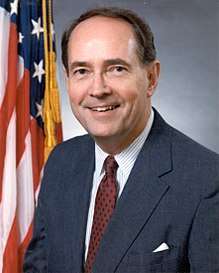
- Ruggero J. Aldisert - (1947) - U.S. Court of Appeals for the Third Circuit 1968-1986[23]
- W. Thomas Andrews - (1966) - Pennsylvania State Senator
- Pavel Astakhov - (2002) - Children's Ombudsman of Russia (2009–present)[24]
- George Barco - (1934) - Cable television executive who played a key role in development of that industry[25]
- Yolanda Barco - (1949) - cable television executive[25]
- Derrick Bell - (1957) - First tenured black professor at Harvard Law School[26]
- Homer S. Brown - (1923) - Judge, civil and political rights activist, elected to the Pennsylvania House of Representatives (1934–1950)[27]
- Mary Beth Buchanan - (1987) - United States Attorney for Western Pennsylvania (2001–2009)[28]
- Linda Drane Burdick - (1989) - Chief Assistant State Attorney at the Orange and Osceola County State Attorney's Office in Orlando, Florida. She was the lead prosecutor on the State of Florida vs. Casey Anthony case.[29]
- Ralph J. Cappy - (1968) - Justice (1990–2008) and Chief Justice of the Pennsylvania Supreme Court (2003–2008)[30]
- Earl Chudoff - (1932) - U.S. Representative (1949–1958)[31]
- Robert J. Cindrich (1968) – former U.S. attorney and US District judge
- Harry W. Colmery (1916) – Author of G.I. Bill.
- William Corbett (1927) - 2nd Secretary of Guam (1953–1956) and the 3rd Civilian Governor of Guam (1956)[32]
- Harmar D. Denny, Jr. - (1911) - U.S. Representative (1951–1953)[33]
- Q. Todd Dickinson - (1977) - former Under Secretary of Commerce for Intellectual Property and Director of the United States Patent and Trademark Office (USPTO) (1999–2001); current Executive Director of the American Intellectual Property Law Association (AIPLA)[34]
- Dawne Hickton (1983) – vice chair, President, CEO of RTI International Metals[35]
- James H. Duff - (1907) - Pennsylvania Governor (1947–1951), U.S. Senator (1951–1957)[36]
- Harry Allison Estep - (1913) - U.S. Representative (1927–1933)[37]
- Lucy Fato - (1991) - Corporate attorney, general counsel of AIG (2017–present)[38]
- Tom Feeney - (1983) - U.S. Representative (2003–2009)[39]
- Melissa Hart - (1987) - U.S. Representative (2001–2007)[40]
- Orrin Hatch - (1962) - President Pro Tempore of the U.S. Senate and U.S. Senator (1976–present)[41]
- David J. Hickton - (1981) – staff director and senior counsel to the House Select Subcommittee on the Coronavirus Crisis, former U.S. Attorney for the Western District of Pennsylvania, director and founder of the University of Pittsburgh Institute for Cyber Law, Policy and Security
- Mark R. Hornak - (1981) - Judge for the United States District Court for the Western District of Pennsylvania[42]
- K. Leroy Irvis - (1953) - first African American to serve as a speaker of the house (Pennsylvania) in any state legislature in the United States since Reconstruction.[43]
- William Lerach - (1970) - Retired notable private securities class action attorney
- Susan Richard Nelson - (1978) - Judge for the United States District Court for the District of Minnesota[44]
- Maryellen Noreika - (1993) - Judge for the United States District Court for the District of Delaware[45]
- Dan Onorato - (1989) - Chief executive of Allegheny County (2003–2012)[46]
- Vjosa Osmani (LLM 2005, SJD 2015) - Member of Parliament for the Assembly of Kosovo (2011–present)[47]
- David A. Reed - (1903) - U.S. Senator (1922–1935)[48]
- Edgar Snyder - (1966) - Prominent personal injury attorney, Pennsylvania "Super Lawyer"[49]
- Joseph H. Thompson (1908) - Medal of Honor Recipient, College Football Hall of Fame player and coach, Pennsylvania State Senator (1913–16)[50]
- Dick Thornburgh - (1957) - Pennsylvania Governor (1979–1987), U.S. Attorney General (1988–1991)[51]
- Debra Todd - (1982) - Justice on the Pennsylvania Supreme Court (2007–present)[52]
- Dennis Unkovic — (1973) — International business advisor, partner at Meyer, Unkovic & Scott and author of six books
- Cyril Wecht - (1962) - American forensic pathologist[53]
- Joseph F. Weis, Jr. - (1950) - U.S. Court of Appeals for the Third Circuit 1973-1988[54]
- Mary Jo White - (1967) - Pennsylvania State Senator[55]
- James A. Wright - (1927) - U.S. Representative (1941–1945)[56]
- Joseph "Chip" Yablonski - (1965) - Attorney, NFL Players Association; son of murdered labor leader Joseph Yablonski[57]
Notes
- https://www.usnews.com/best-graduate-schools/top-law-schools/university-of-pittsburgh-pittsburgh-campus-03141. Retrieved 15 January 2019. Missing or empty
|title=(help) - "2016 Employment Summary Data" (PDF).
- George Thornton Fleming, History of Pittsburgh and Environs, from Prehistoric Days to the Beginning, 1922, American Historical Society, New York, pg 364
- Agnes Lynch Starrett, Through one hundred and fifty years: the University of Pittsburgh, 1937, University of Pittsburgh Press, pg. 335-36, accessdate=2009-04-05
- Agnes Lynch Starrett, Through one hundred and fifty years: the University of Pittsburgh, 1937, University of Pittsburgh Press, pg. 336-38, accessdate=2009-04-05
- Agnes Lynch Starrett, Through one hundred and fifty years: the University of Pittsburgh, 1937, University of Pittsburgh Press, pg. 339-343, accessdate=2009-04-05
- Agnes Lynch Starrett, Through one hundred and fifty years: the University of Pittsburgh, 1937, University of Pittsburgh Press, pg. 347, accessdate=2009-04-05
- Agnes Lynch Starrett, Through one hundred and fifty years: the University of Pittsburgh, 1937, University of Pittsburgh Press, pg. 352, accessdate=2009-04-05
- Robert C. Alberts, Pitt :the story of the University of Pittsburgh, 1787-1987, University of Pittsburgh Press, 1986, page 406, accessdate=2009-04-05
- https://www.usnews.com/best-graduate-schools/top-law-schools/law-rankings
- "The Princeton Review: University of Pittsburgh School of Law". The Princeton Review. Retrieved 2009-08-21.
- http://www.law.pitt.edu/sites/default/files/files/Std509InfoReport-132-132-11-25-2015_14-21-26.pdf
- http://law.pitt.edu/academics/practicums
- http://www.law.pitt.edu/admissions/class-profile
- http://www.abarequireddisclosures.org/
- "Cost of Attendance". Cost. Retrieved 15 January 2015.
- "Comparison of Educational Debt". Comparison of Educational Debt. Retrieved 15 January 2015.
- "The Best Value Law Schools of 2014". Above the Law.
- http://www.law.pitt.edu/careers/data/2020
- http://www.law.pitt.edu/careers/data/2020
- "QS World University Rankings By Subject 2013 - Law". Quacquarelli Symonds. Retrieved July 14, 2013.
- "US News and World Report Ranking". US News and World Report. Retrieved September 23, 2018.
- "Ruggero J. Aldisert". Federal Judicial Center. Retrieved 24 February 2013.
- "Pavel A. Astakhov". Official website of the Children's Rights Commissioner for the President of the Russian Federation. Archived from the original on 9 March 2012. Retrieved 7 March 2012.
- Lomando White, Patricia (23 June 2003). "Law Building Renamed in Barcos' Memory". Pitt Chronicle. University of Pittsburgh. Archived from the original on 8 August 2014. Retrieved 22 July 2013.CS1 maint: ref=harv (link)
- "Derrick Bell". The President and Fellows of Harvard College. Retrieved 24 February 2013.
- "Pitt In The Election". University of Pittsburgh Alumni Review. General Alumni Association of the University of Pittsburgh. 5 (3). December 1938. Retrieved February 23, 2013.
- "Mary Beth Buchanan". Notable Names Data Base. Retrieved 26 February 2013.
- Article (2012-05-31). "Iron Lady | Orlando Home & Leisure". Ohlmag.com. Archived from the original on 2012-06-10. Retrieved 2012-08-18.
- "Ralph J. Cappy". whoislaw.info. Retrieved 24 February 2013.
- "Earl Chudoff". Biographical Directory of the United States Congress. Retrieved 24 February 2013.
- "Law". The Alumni News Review. University of Pittsburgh. 12 (1): 6. October 1957. Retrieved February 23, 2013.
- "Harmar D. Denny, Jr". Biographical Directory of the United States Congress. Retrieved 24 February 2013.
- Dickinson's bio from the Intellectual Property Owners Association
- "Profile -- Dawne Hickton". Forbes. Archived from the original on July 23, 2011. Retrieved March 4, 2012.
- "James H. Duff". Biographical Directory of the United States Congress. Retrieved 24 February 2013.
- "Harry Allison Estep". Biographical Directory of the United States Congress. Retrieved 24 February 2013.
- "McGraw Hill Financial Appoints Pitt Law Alum Lucy Fato Executive Vice President and General Counsel". University of Pittsburgh School of Law. September 24, 2014. Retrieved October 19, 2019.
- "Tom Feeney". Biographical Directory of the United States Congress. Retrieved 26 February 2013.
- "Melissa Hart". Notable Names Data Base. Retrieved 26 February 2013.
- "Orrin Hatch". Biographical Directory of the United States Congress. Retrieved 24 February 2013.
- "Mark R. Hornak". Federal Judicial Center. Retrieved 26 February 2013.
- "K. Leroy Irvis". The New York Times Company. Retrieved 24 February 2013.
- "Susan Richard Nelson". Federal Judicial Center. Retrieved 26 February 2013.
- "President Donald J. Trump Announces Ninth Wave of Judicial Nominees and Tenth Wave of United States Attorney Nominees". Retrieved May 30, 2020.
- "Dan Onorato". Project Vote Smart. Retrieved 26 February 2013.
- http://law.pitt.edu/people/vjosa-osmani
- "David A. Reed". Biographical Directory of the United States Congress. Retrieved 24 February 2013.
- "Edgar Snyder". linkedin corporation. Retrieved 24 February 2013.
- "Joseph H. Thompson". The Pittsburgh Record. University of Pittsburgh. 2 (3): 222. April 1928. Retrieved February 23, 2013.
- "Dick Thornburgh". Notable Names Data Base. Retrieved 24 February 2013.
- "Debra Todd". Project Vote Smart. Retrieved 26 February 2013.
- "Class Notes". Pitt Magazine. University of Pittsburgh. Winter 2010. Retrieved February 23, 2013.
- http://www.post-gazette.com/local/region/2014/03/19/Former-Judge-Joseph-Weis-dies-at-91/stories/201403190178
- "Mary Jo White". Project Vote Smart. Retrieved 24 February 2013.
- "James A. Wright". Biographical Directory of the United States Congress. Retrieved 24 February 2013.
- 1965 University of Pittsburgh Commencement. University of Pittsburgh. June 7, 1965. p. 31. Retrieved February 26, 2013.
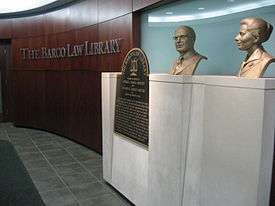
.jpg)